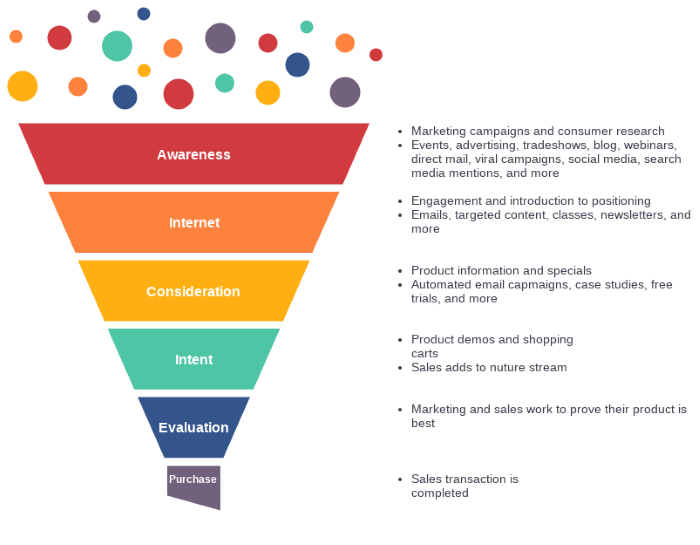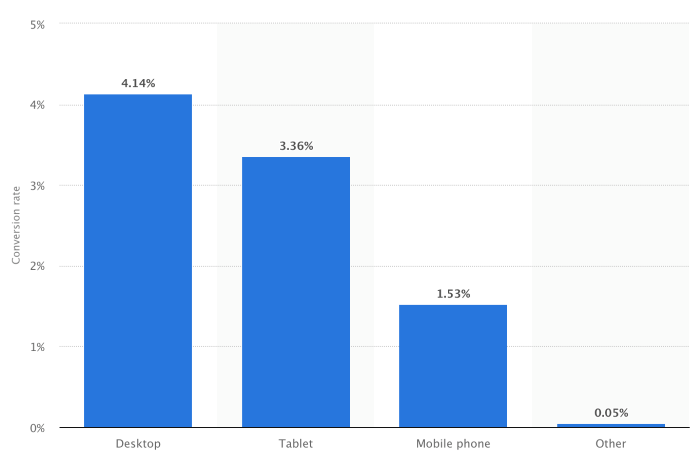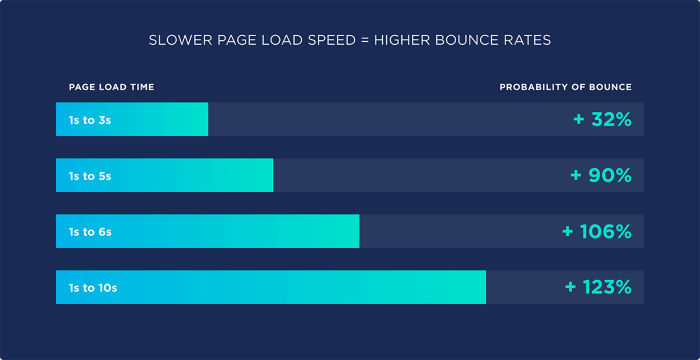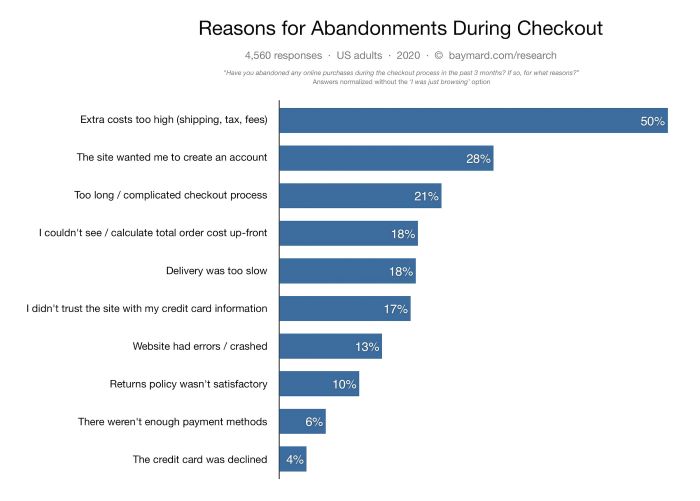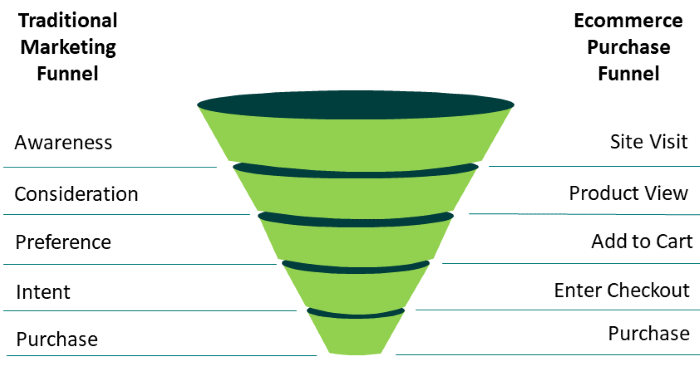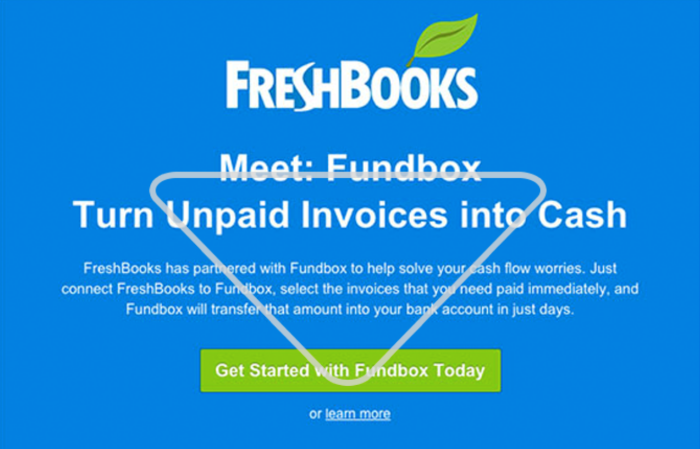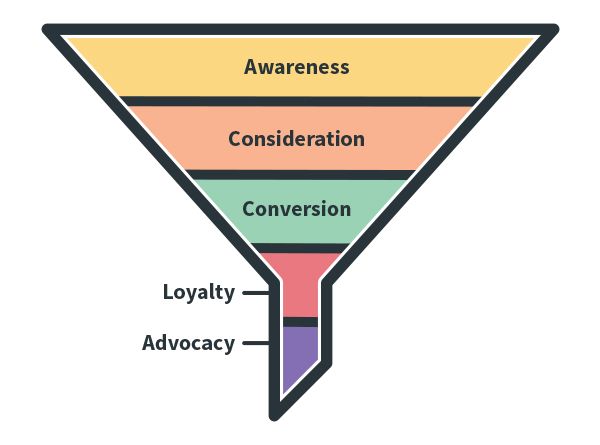The marketing funnel shows the path your customers follow from first learning about your brand to making a purchase. This idea has been used by marketers and advertisers for more than 100 years, but it’s more important now than ever. The typical journey to buy now includes hundreds of touchpoints.
In a complex consumer environment, the marketing funnel helps you map these touchpoints, marketing strategies and user actions to different stages of the consumer journey.
More importantly, it offers a plan for improving the whole sales process, helping you boost conversions at every stage and keep users on track for their next purchase. In this guide, we explore how you can apply the funnel idea to enhance each part of the customer journey, stop leads from being lost, and convert more of them into paying customers.
What is a marketing funnel?
A marketing funnel represents the customer journey as their interest in making a purchase increases. The classic funnel is based on the AIDA model, which describes four stages of the consumer journey; awareness, interest, desire and action.
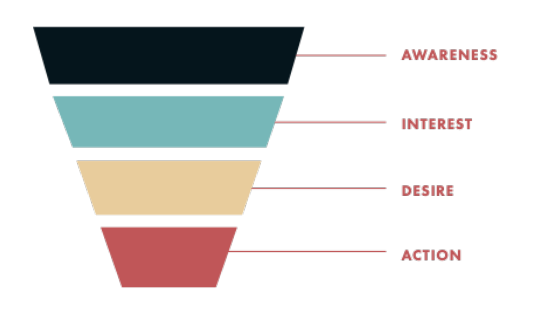
The funnel shape illustrates how prospects “drop out” at each stage of the funnel, meaning the volume of interested leads reduces while those remaining demonstrate a stronger purchase intent.
The AIDA model is widely attributed to E. St. Elmo Lewis who is said to have developed the concept in 1898. The concept has been tweaked countless times since then but the basic principle still applies to all modern marketing and advertising strategies.
If ten thousand people see one of your ads (awareness), a percentage of those will click through to your website (interest), some of whom will buy into the message of your landing page (desire) and a percentage of those will convert (action).
In the example above, we’re applying a marketing funnel to a single advertising campaign to demonstrate how the AIDA principle works. But this model applies to the entire consumer journey, which can involve dozens or even hundreds of different touchpoints across search, social, email and other channels.
The illustration above extends upon the AIDA principle to visualise a more complex consumer journey and attributes each stage of the funnel to different types of marketing campaigns and interactions. This is one of countless examples of how the funnel has been adapted over the past century but it also illustrates how you can attribute marketing strategies to each stage of the funnel – and you can do the same for touchpoints (e.g. types of searches) and user actions.
This attribution is crucial for optimising your marketing funnel. We’ll be looking at this in more detail later.
What is end-to-end funnel optimisation?
As mentioned in the previous section, one of the key principles of the marketing funnel is that prospects drop out at each stage. This is a natural part of the consumer journey; no business can expect to convert 100% of the leads generated at the top of the funnel.
That being said, the average conversion rate on desktop is just 4.14% and 1.53% on mobile, according to Monetate’s 2019 EQ2 Benchmark Report.
Average conversion rates aren’t this low because the majority of consumers simply lose interest. Look at any study analysing the cause of failed conversions and declining interest is never listed as a reason.
Instead, you’re losing leads at the top of your funnel because your loading times are too slow or the copy on your pages isn’t capturing people’s interest. Likewise, you’re losing leads in the middle of your funnel because users aren’t ready to buy during the first visit and your follow-up ads, emails and remarketing campaigns aren’t bringing them back to your website.
Even at the final stages of your funnel, where purchase intent should be at its highest, failed conversions are most likely due to problems such as hidden costs, tricky account creation, poor checkout UX and delivery issues.
At each stage of the marketing funnel, issues like these are causing leads to drop out. These are prospects that would otherwise buy from you, which is bad news for your profit margins and marketing ROI. You’re paying good money to capture and nurture these leads, which means every one that drops out is hurting your bottom line.
End-to-end funnel optimisation is a systematic approach to conversion rate optimisation that identifies and fixes the issues causing leads to drop out. By optimising each stage of your marketing funnel, you can increase the number of prospects that take the next step along the consumer journey and, ultimately, convert into paying customers.
First, you need the right kind of marketing funnel
Earlier, we looked at a funnel that attributes marketing strategies to defined steps of the consumer journey. This is important for deciding how to capture leads at each stage of the funnel and which strategies are most effective at nurturing them along the buying process.
This isn’t enough to optimise the marketing funnel from one end to the other though. To do this, you also need to attribute user actions to each stage of the funnel. This allows you to determine which friction points are preventing users from completing these actions and causing dropouts.
Attributing actions to your marketing funnel
Attributing actions to each stage of your marketing funnel allows you to measure users’ progress along the consumer journey. You can also use these actions to target users with more relevant messages as they move from one stage to another and their needs/interests change.
Not only that, but these actions also reveal which elements, pages and performance factors you need to optimise to increase the number of prospects successfully navigating your funnel.
The image above shows some core actions that you can attribute to different stages of a funnel. This gives you a basic idea of what this process involves, although each of the actions listed above requires users to complete a series of much smaller actions.
For example:
- Site visit: View ad, search result or link > Click through to site > Wait for page to load.
- Product view: Navigate landing page > Click through to product page > Wait for page/content to load > Engage with product content.
- Add to cart: Click “buy” button > View animation confirming product added to cart > Select to continue shopping or proceed to checkout.
- Enter checkout: Select proceed to checkout > Wait for page/UI to load > Engage with checkout.
- Purchase: Review purchase > Create account or checkout as guest > Select delivery option > Add payment and delivery details > Confirm purchase > Complete purchase.
If users fail to complete any of those smaller actions, everything grinds to a halt and you’re probably going to lose another lead.
By attributing actions to each stage of your marketing funnel, you can determine which friction points will prevent them from completing these actions and optimise to finetune every step of the buying process.
Identifying friction points in your funnel
Once you’ve mapped out and attributed key actions to your marketing funnel, you can identify the friction points related to each one. For example, every page visit counts as an action – users have to wait for each of these pages and their content to load. So page speed is a potential friction point every time users click through to another page. Speed optimisation should be one of your top priorities.
If you’ve attributed user actions to your funnel in enough detail, you can track them in order to accurately diagnose problems too.
Let’s say your landing pages have low conversion rates but you’re not sure what the issue is. You can start by measuring loading times and comparing these against the average time spent on page to check whether pages are loading quickly enough and that users are hanging around long enough to see your message.
Next, you can use a heatmapping tool like Hotjar to check that users are scrolling down your page, engaging with your content and seeing your CTAs. You’ll also see whether users are clicking or trying to click your CTA buttons or even clicking other elements on the page by mistake.
If users aren’t scrolling far enough to see your CTAs, then you can try placing them further up the page or optimising your content to give visitors more reason to keep scrolling. If users are seeing your CTAs but not clicking them, then you have to work on the message in your calls to action to make them more compelling.
These action-by-action investigations will help you narrow down the friction points that are causing leads to drop out of your funnel and where to focus your optimisation/testing efforts.
Spotting gaps in your funnel
Friction isn’t the only reason a user might drop out of your funnel. There are instances where users will add a product to their basket or click to download some of your content and quit the session before completing the conversion. Sometimes, people simply get cold feet if they’re not ready to make the commitment or take that next step.
No need to panic though. Because you can also use your marketing funnel to see where these gaps are and determine the design fixes or strategies to put in place.
For example, you can run remarketing campaigns for users who quit the session on specific URLs (checkout pages, signup pages, download pages etc) and target them with ads to tempt them back. Or you can incentivise users to sign up to your email lists to establish a personal line of communication.
Navigational gaps are another area where leads often slip through and drop out of your marketing funnel. It may be that users can’t navigate your site, find what they’re looking for on a page or accidentally drop out of the funnel by visiting the wrong page. Every link on your website is a potential gap for leads to slip through. You should scrutinise both the structure of your website and linking between pages.
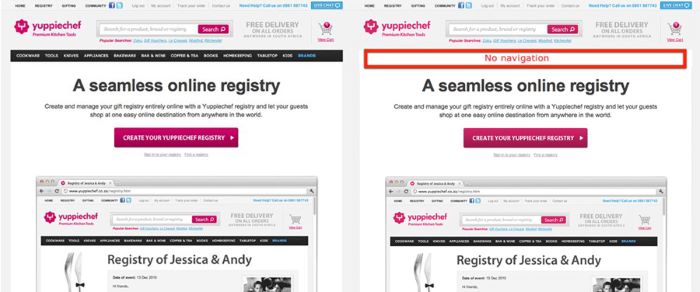
Make sure important links are prominent and don’t be afraid to remove links that aren’t helpful to your cause.
How to optimise your marketing funnel
Now that we’ve covered the overall concepts and approaches to optimising your sales funnel, let’s look at the practical process of setting up this strategy. By this point, you’ve already mapped out your funnels and attributed actions to each stage. Now you need a way to track and measure these actions.
1. Set up event tracking
To track and measure detailed user behaviour on your website, you want to set up some kind of event tracking. In Google Analytics, this is now called Event Measurement but you’ll find similar features in customer relationship management (CMS) platforms, which are often called site tracking or something similar.
Site Tracking is easy to set up in CRMs like ActiveCampaign (Source)
Whatever form of event/site tracking you use, you should be able to measure actions such as CTA button clicks, video plays, form submissions and a range of other click-oriented events. This is the key to optimising your marketing funnel based on the actions that build up to conversions and sales.
2. Set up URL tracking
You also want to be able to track page visits – you can do this with URL tracking. Once again, this can be done in Google Analytics and a number of CRMs and other marketing platforms. This involves adding custom parameters to URLs so that when users navigate your website you can map out their journey.
Combine this with Event Measurement and you’ve got a comprehensive system for tracking user behaviour across your website and on individual pages.
3. Create your reports
Now that you’re able to track user actions across your sales funnel, it’s time to create reports for each stage.
If we go back to this example of a marketing funnel and the list of actions we attributed to each stage earlier, our imaginary reports are going to include the following:
- Site visit: View ad, search result or link > Click through to site > Wait for page to load.
- Product view: Navigate landing page > Click through to product page > Wait for page/content to load > Engage with product content.
- Add to cart: Click “buy” button > View some kind of animation that confirms product has been added > Select to continue shopping or proceed to checkout.
- Enter checkout: Choose to proceed to checkout > Wait for page/UI to load > Engage with checkout.
- Purchase: Review purchase > Create account or checkout as guest > Select delivery option > Add payment and delivery details > Confirm purchase > Complete purchase.
Of course, your actual reports are going to be more in-depth, but the key thing is that you have individual reports for each stage, composed of the user actions attributed to them. Once you’ve got enough data to start making decisions, these reports will provide the blueprint for your funnel optimisation campaigns.
4. Identify and diagnose dropouts
Once you’ve got a reliable set of data in your reports, you’ll see that certain actions aren’t being completed. You’ll also spot paths where users are following your funnel and then suddenly dropping out by not completing a specific action – and this tells you where to investigate.
What you want to do now is determine whether these leads are dropping out because of friction and/or UX issues or because they’re falling through gaps in your funnel.
Start by pinpointing the pages where these failed actions are most prevalent and assess how users are interacting with these pages. Use heatmaps to see what visitors are clicking and where they’re scrolling.
If users are slipping through gaps in your sales funnel, they’ll generally quit the session or navigate to an irrelevant page. If you’re dealing with friction and UX issues, then you’ll need to take a closer look at how users are engaging with your page and the individual elements on your page to diagnose the problem.
First, make sure loading times aren’t a problem, ensure users are seeing the most important elements on your page (scrolling heatmaps) and rule out any distracting elements and failed clicks. Then, take a closer look at your events measurement/site tracking to see how users are engaging with your CTAs, forms and other key elements.
If none of this produces any clear warning signs, you should focus on optimising your page content and copy.
5. Fill the gaps in your marketing funnel
Once you’ve identified gaps in your marketing funnel, you need to put some strategies in place to plug them up. There are a number of approaches to doing this, each one with pros and cons to consider:
- Remarketing: These ad campaigns allow users to leave and then targets them with ads aimed at bringing them back again in the future.
- Email marketing: With users signed up to one of your email lists, you’ve got an off-site channel to reach them.
- Structure/navigation: Optimising your website structure and navigation can prevent users from slipping through gaps.
- Content audits: Likewise, gaps in your content marketing strategy could be leaking leads. Make sure you have compelling messages at every stage of the funnel and content that solves consumer problems as they continue through the buying process.
- Chat widgets: These can be set to trigger after delays, user inaction or scrolling behavior to get lost visitors back on track.
- Exit-intent popups: A lot of brands use exit-intent popups that trigger when a user looks like they’re about to quit the session (these only work effectively on desktop).
A lot of businesses make the mistake of trying to prevent users from leaving their website at all costs. This isn’t what we mean by filling in the gaps of your funnel. Your aim is to prevent users who want to continue engaging with your brand from dropping out inadvertently because they can’t find what they’re looking for or they slip through navigational holes.
You also want to allow prospects to leave your website. Maintain channels that allow you to reach them after the session is over and bring them back again when the time is right (remarketing, email marketing etc).
6. Run tests to reduce friction and solve UX problems
Now that you’ve identified and diagnosed the friction points preventing users from taking action, it’s time to test some solutions. This is classic conversion rate optimisation. The most important thing is that you have a reliable testing system in place.
Above all, you need to achieve statistical significance and, as a minimum, you should aim for at least a 95% confidence level. This means your test results could only occur by chance in one out of every 20 tests (5%), which still isn’t watertight.
Start by testing pages and elements where negative performance is at its worst. If your tests are successful, this is where you’ll make the most impact and you can start finetuning smaller details once the larger issues are fixed.
Much like a funnel, CRO campaigns should start broad and gradually hone in on details.
For example, if you’ve identified a call to action that users are seeing but not engaging with, don’t dive in and start changing font styles and text alignments. Rework the copy in your CTA and focus on making the message more compelling.
Highlight a different selling point or key/benefit to see if you’ve been taking the wrong angle in your original CTA.
Once you’re confident with the message in your call to action, make sure you have enough contrast in your CTA to make it pop out of the page. Background, text and button colours are the most important aspects here but also think about font sizes and weights, which help you draw the eye and make your message easier to digest.
If in doubt, follow the inverted pyramid design principle for CTAs and optimise from there. This format naturally captures attention with a bold headline, expands on the message with smaller text and then guides the user’s eye towards the CTA button. This is achieved by the top element being the widest and each element below gradually decreasing in width to create an inverted pyramid.
Expanding the funnel concept
The funnel remains one of the most important and useful concepts in marketing and advertising but it’s not perfect. There are some limitations and these are especially evident at the latter stages of funnels based on AIDA and similar principles.
If we go back to the first funnel example we looked at in this article, the visualisation suggests that the consumer journey ends as soon as the action or purchase is completed.

Of course, we know this isn’t true; the customer experience truly begins after the initial purchase. This is where customer service, customer experience, positive reviews, repeat purchases, brand loyalty, referrals and customer lifetime value all come into play.
Over time, marketers have applied this to the traditional funnel and visualisations like this are more common:
More recently, we’ve seen a push towards something called the flywheel, which represents the cyclical nature of the consumer journey. Rather than following the top-to-bottom concept of the funnel, the flywheel puts the emphasis on a circular journey that constantly moves through phases of marketing, sales and customer service.
This cycle is an important concept but the flywheel also has its problems – namely the fact that it oversimplifies the marketing, sales and service processes. The marketing funnel is a much stronger representation of how these processes fit together and how each stage of the buying process contributes to the wider consumer journey – as long as you understand that the journey doesn’t end once a customer reaches the bottom of your funnel.
If anything, the journey starts all over again.
